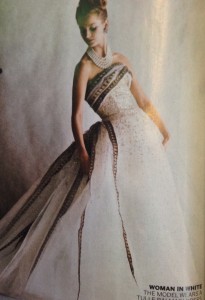Walter Hartright is the main narrator of Wilkie Collin’s The Woman in White however he is not trustworthy. From the start the reader is told by Walter that he has put together these narrations to prove his beloved Laura’s identity as though the reader is judge and jury in the court of her life. Walter seems to pride himself on the virtue of his motives, on his ability to stay above the other men in the story who are driven by greed or malice. Whereas Percival wants Laura for her money, her property, Walter is convinced that his love for Laura is honest and pure. However the language that Walter uses about Laura contradicts that, as Perkins and Donaghy point out in their piece A Man’s Resolution: Narrative Strategies in Wilkie Collins’ The Woman in White “her ability to fit into the role of a charming and innocent young girl is more important than the individuality he is supposedly reclaiming” (393). Walter does not love Laura, he objectifies her.
After hearing the Counts conditions Walter decides “it was hard, when I had fastened my hold on him, at last, to loosen it again of my own accord- but I forced myself to make the sacrifice. In plainer words, I determined to be guided by the one higher motive of which I was certain, the motive of serving the cause of Laura, and the cause of Truth” (591). The repetition of “I” with active verbs like “I had fastened”, “I forced”, “I determined”, and “I was certain” shows how Walter is ultimately concerned not with Laura’s identity, but his own action. This is reinforced by repeating “my” and “myself”. All these sentences revolve around Walter and what he owns. The only mention of Laura- the supposed benefactor in all of this- is in her comparison to “Truth” (591). This does not give her agency or a voice however, it pushes her farther away from any real characterization. She is an entity, like Truth, or God, or “My Wife” (589). These words condense large ideas with many different meanings behind them and therefore fall flat as actual descriptions of who Laura really is. Walter doesn’t see Laura as a human, but an idea. He is fighting not because the law is unfair and was used to strip Laura of her identity or because he loves Laura, but as Perkins and Donaghy say, “because the values Walter upholds exist to protect property” (400). The story even ends with Walter Hartright and his property. In fact, he never succeeds in giving Laura her identity. To the end Walters hand rules the narration and seems to erase Laura from the pages. Perhaps Wilkie Collins is suggesting that to love in the Victorian sense, through courtship and marriage, is to erase a woman’s identity to privilege their husbands actions.
